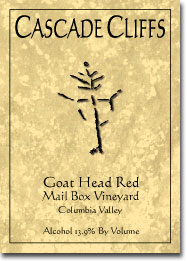 |
|
Wine Details
Price:
Description:
A blend of Merlot, Pinot Noir, Cabernet, Nebbiolo, Zinfandel and Barbera. Named after a goat that used to wonder the cliffs above the vineyard this easy drinking red wine is designed to enjoy without deliberation. Light and fruity with a clean finish. It's a pizza, pasta, burger wine!
|
|
|